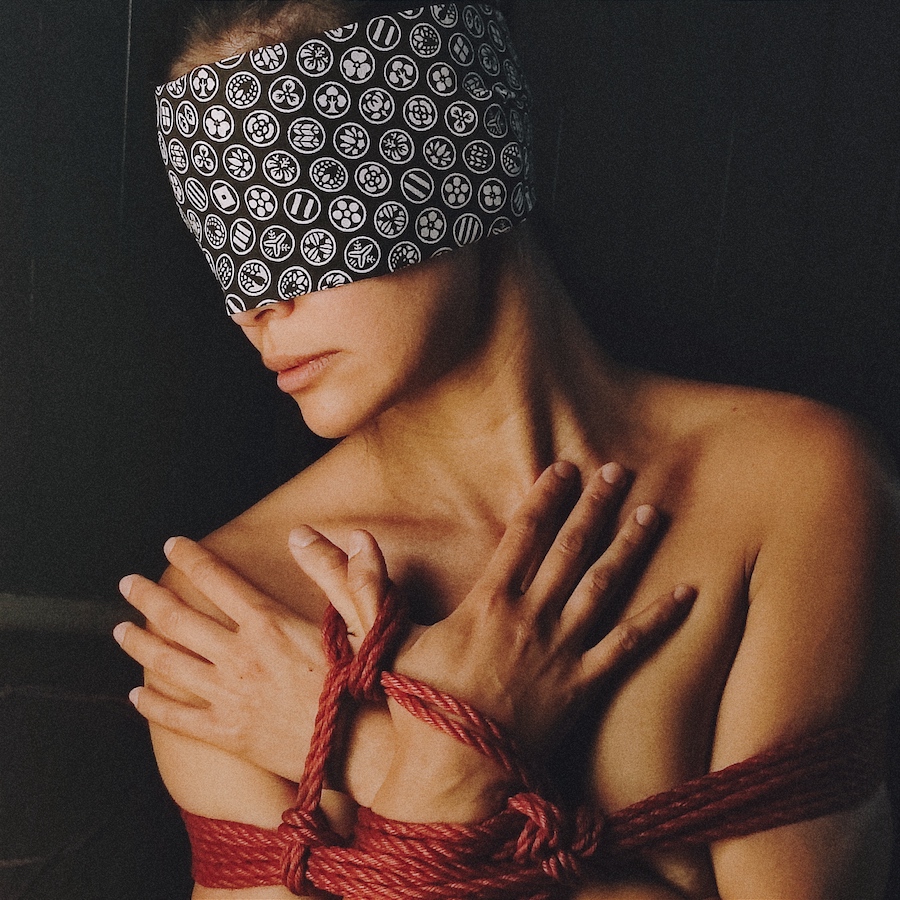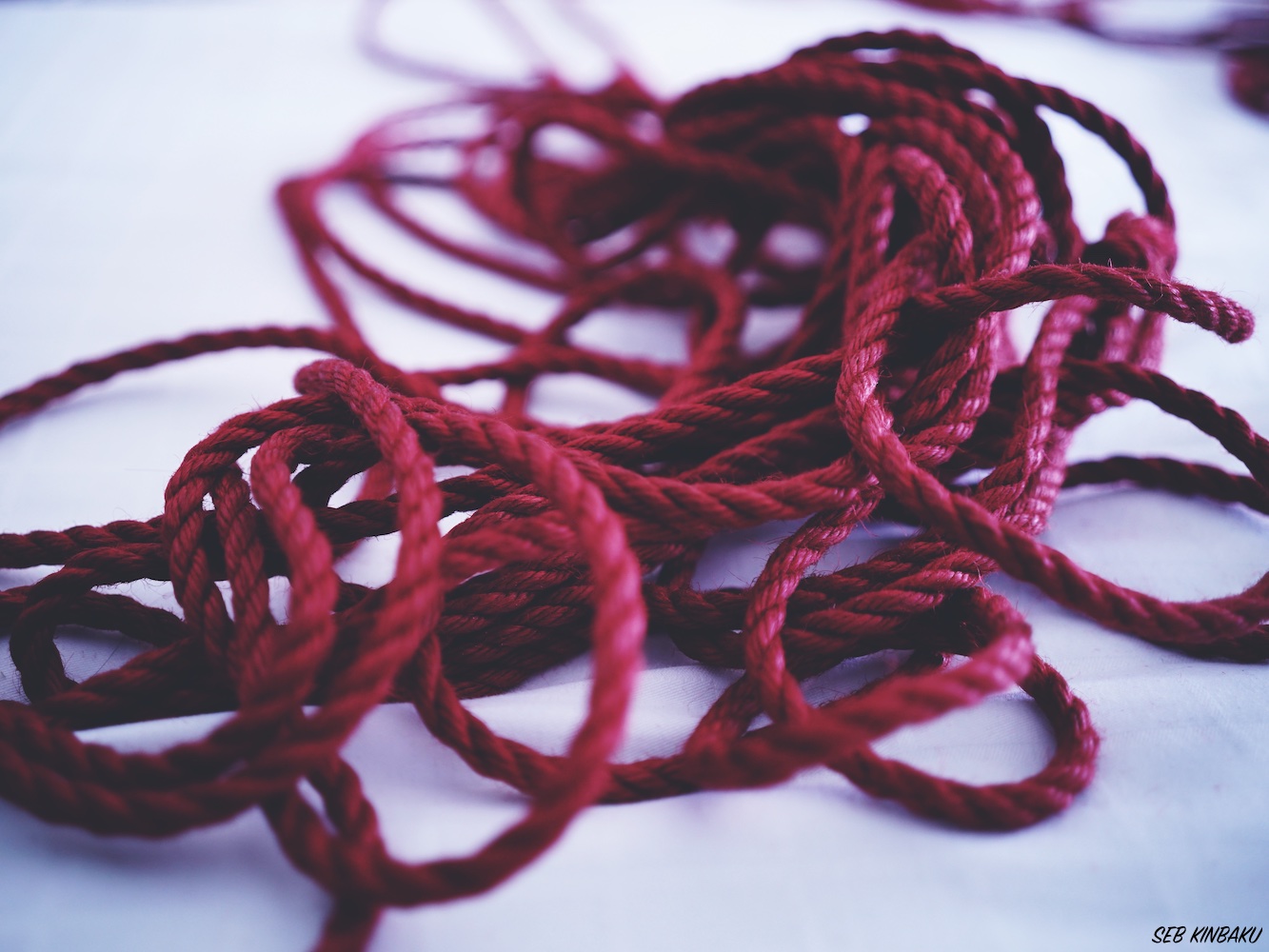Shibari and Kinbaku: Everything You Need to Know
-----------------------------------
What is Shibari/Kinbaku?
Shibari is a Japanese practice of artistic bondage that involves tying the body with ropes to create aesthetic patterns and functional positions. It can be used for both sexual pleasure and artistic expression.
Photo: Shibari by Seb Kinbaku
-----------------------------------
Where does Shibari come from?
Shibari was developed in Japan over centuries as a form of art and discipline. It originates from Hojojutsu, a method of tying prisoners with ropes that was used by law enforcement in Japan for centuries.
-----------------------------------
What is the difference between Shibari and Kinbaku?
Although the terms Shibari and Kinbaku are often used interchangeably, some purists believe that Kinbaku specifically refers to a more traditional practice of Japanese bondage, while Shibari is a more general term that can include Western influences and a wider variety of styles.
Photo: Shibari by Seb Kinbaku
-----------------------------------
Is Shibari safe?
As with any physical activity, there are risks associated with practicing Shibari, such as injuries or nerve damage. However, when Shibari is practiced by trained and experienced individuals who are aware of the risks and precautions to avoid injuries, it can be performed safely.
-----------------------------------
What materials are used for Shibari ropes?
Ropes used for Shibari are typically made of hemp or jute. Jute ropes are more traditional and often preferred for their natural texture and strength, while hemp ropes are softer and less prone to breaking. Some practitioners also use other materials such as silk or Manila hemp.
-----------------------------------
Is Shibari an art form or a sexual practice?
Shibari can be considered both an art form and a sexual practice. Some practitioners focus more on the aesthetics and beauty of rope art, while others use Shibari as a form of sexual play.
-----------------------------------
How can I learn Shibari?
It is recommended to attend Shibari classes and workshops with experienced and qualified instructors to learn techniques safely and ethically. Practitioners should also be patient and diligent in their learning, as Shibari is a complex practice that can take time to master.

-----------------------------------
Is Shibari only for heterosexual couples?
No, Shibari can be practiced by individuals of all sexual orientations and gender identities. Shibari is an inclusive practice, and it is important to respect the choices and preferences of each participant.
-----------------------------------
How can I practice Shibari ethically and consensually?
Shibari is a practice that requires a high level of communication and respect between participants. It is important to ensure that all parties involved are consenting and have agreed to participate in the Shibari session.
Practitioners should discuss their boundaries, expectations, and preferences before beginning the session. Communication is crucial throughout the practice, as participants need to be able to signal any pain, discomfort, or unease.
Physical safety of participants is also essential. Shibari ropes should be used in a way that does not cause pain or damage to the body's muscles or tissues. Practitioners should be attentive to any signs of pain or strain and be prepared to stop the session at any time if a participant is uncomfortable.
Finally, practitioners should be aware of the emotional aspect of Shibari. The practice can be very intimate and emotionally intense, and it is important to respect the feelings and emotions of each participant. Practitioners should demonstrate respect and kindness and avoid any behavior that could cause emotional distress.

-----------------------------------
Is Shibari legal?
Shibari itself is not illegal in most countries, but it is important to note that some forms of bondage or other sexual practices may be considered illegal in certain jurisdictions. It is therefore important to research local laws before practicing Shibari. Additionally, it is crucial to ensure that all parties involved in the session are consenting and of legal age.
-----------------------------------
What type of rope is best for Shibari?
The choice of rope depends on your personal preferences and experience. Jute and hemp ropes are the most popular due to their strength, texture, and ability to hold friction. Coconut ropes are also used but only for creating sensations.
-----------------------------------
What is the ideal rope length for beginners in Shibari?
The standard length for beginners in Shibari is 7 to 8 meters (23 to 26 feet). This allows for Shibari techniques to be performed while maintaining easy and flexible handling. Shorter ropes can also be used for specific ties.
-----------------------------------
How do I choose the right rope thickness for Shibari?
Rope thickness depends on the desired effect and the model's comfort. Ropes between 4 and 7 mm are commonly used for Shibari, as they offer a good balance between strength, aesthetics, and comfort.
-----------------------------------
What quality criteria should I consider when purchasing a Shibari rope?
Quality criteria include strength, texture, flexibility, durability, and the absence of defects such as knots or broken strands. Also, ensure the rope is properly treated to avoid skin irritation.
-----------------------------------
How do I maintain and clean my Shibari rope to ensure its durability?
After each use, inspect the rope for signs of wear and remove any knots. To clean jute and hemp ropes, gently rub them with a damp cloth by hand. Allow the rope to air dry, away from direct sunlight.
-----------------------------------
Is there a Shibari kit for beginners?
Yes, there is a Shibari kit for beginners that includes 3 hemp or jute ropes, an instruction guide, and safety scissors.

-----------------------------------
What are the differences between hemp and jute ropes for Shibari?
Jute ropes are more traditional, require maintenance and good handling, while hemp ropes are softer and easier to handle for beginners. Jute ropes also have a rougher texture, which can add a sensory dimension to the Shibari experience.
-----------------------------------
How do I choose the color of my Shibari rope to create the desired aesthetic?
The color of the rope depends on your personal preferences and the atmosphere you want to create. Traditional colors are brown and red, but you can also choose bright or pastel colors for a more playful or artistic effect.
-----------------------------------
What safety precautions should I take when using Shibari ropes?
Safety is paramount when practicing Shibari. Ensure you know basic techniques, communicate with your partner, and constantly monitor their comfort and blood circulation. Always have safety scissors on hand to quickly cut the rope in case of an emergency.





